The Best SPS Corals for Beginners
What are the best SPS corals for beginners? Here is a list of the 9 best SPS corals for beginners:
Montipora Capricornis: Montipora capricornis
Bird’s Nest Coral: Seriatopora hystrix
Pocillopora damicornis: Pocillopora damicornis
Stylophora: Stylophora spp.
Pavona: Pavona spp.
Psammocora: Psammocora spp.
Montipora Digitata: Montipora digitata
Porites: Porites spp.
Leptoseris: Leptoseris spp.
Please note: for Stylophora, Pavona, Psammocora, Porites, and Leptoseris, I have used “spp.” to indicate that there are multiple species within each of these genera that are suitable for beginners.
Introduction
Starting a reef tank can be an exciting and rewarding experience but also daunting for beginners. One of the critical aspects of a thriving reef tank is selecting suitable corals to create a beautiful and healthy ecosystem.
In this blog post, we will explore the best SPS (small polyp stony) corals for beginners, focusing on their care requirements, recommended water parameters, placement, feeding, and the pros and cons of each species.
SPS coral for sale at Saltwaterfish.com
Montipora Capricornis (Montipora capricornis)
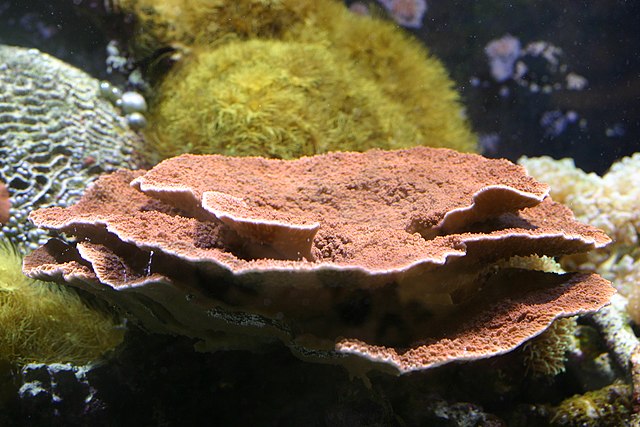
Known for its unique growth forms that often resemble scrolls, whorls, or plates, Montipora capricornis is an attractive SPS coral. This robust and fast-growing coral comes in various colors: green, red, purple, blue, and orange.
Its striking appearance and easy-care nature make it an easy addition to the best SPS corals for beginners. Another type of Montipora, the Montipora Digitata, is listed later in the article.
Montipora Capricornis Recommendations
Water Parameters
- Phosphate: 0.03 – 0.07 ppm
- Calcium: 380 – 450 ppm
- Magnesium: 1250 – 1350 ppm
- Alkalinity: 8 – 11 dKH
Water Flow: Moderate to high
Tank Placement: Middle to the upper part of the tank
Feeding: Not required, but will benefit from supplemental feeding
Montipora Capricornis Pros and Cons
- Attractive, encrusting growth forms
- Relatively hardy and fast-growing
- Available in a variety of colors
- It can be prone to tissue necrosis if water parameters are unstable.
- It can dominate other corals if not given enough space.
Bird’s Nest Coral (Seriatopora hystrix)
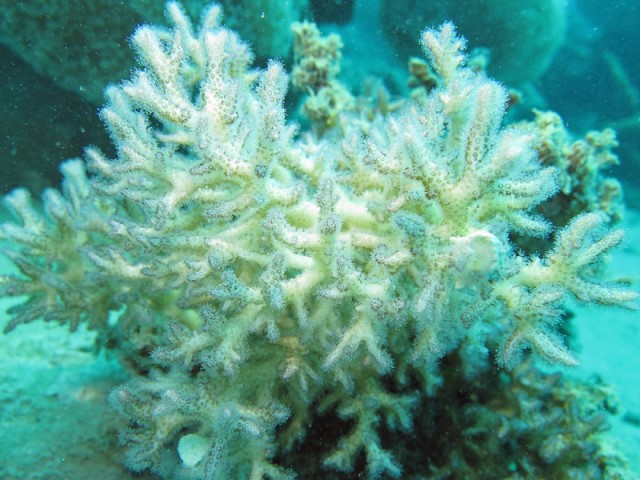
The Bird’s Nest Coral, or Seriatopora hystrix, boasts a beautiful branching growth pattern. This fast-growing, hearty coral is well-suited for novice reef keepers due to its adaptability to various water conditions.
The coral is available in several appealing colors, including green, pink, purple, and brown.
Bird’s Nest Coral Recommendations
Water Parameters
- Phosphate: 0.03 – 0.07 ppm
- Calcium: 380 – 450 ppm
- Magnesium: 1250 – 1350 ppm
- Alkalinity: 8 – 11 dKH
Water Flow: Moderate to high
Tank Placement: Upper part of the tank
Feeding: Not required, but will benefit from supplemental feeding
Bird’s Nest Coral Pros and Cons
- Unique, branching growth pattern
- Fast-growing
- Hardy and adaptable
- It can be prone to tissue necrosis if water parameters are unstable.
- It can become invasive if not properly managed.
Pocillopora damicornis (Pocillopora damicornis)
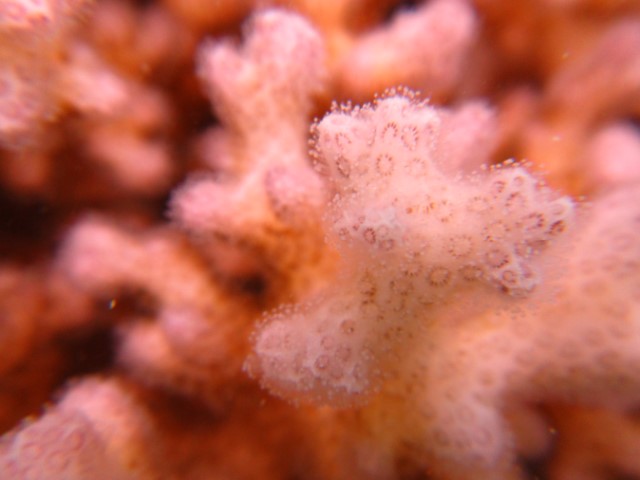
Pocillopora damicornis is an ideal coral for beginners with its alluring branching growth pattern. This coral adds color to any tank with various hues, such as green, pink, and purple.
Pocillopora’s adaptability to a wide range of water parameters and hardy nature make it an excellent choice.
Pocillopora damicornis Recommendations
Water Parameters
- Phosphate: 0.03 – 0.07 ppm
- Calcium: 380 – 450 ppm
- Magnesium: 1250 – 1350 ppm
- Alkalinity: 8 – 11 dKH
Water Flow: Moderate to high
Tank Placement: Middle to the upper part of the tank
Feeding: Not required, but will benefit from supplemental feeding
Pocillopora damicornis Pros and Cons
- Attractive, branching growth pattern
- Fast-growing and hardy
- Can tolerate a wide range of water parameters
- It can become invasive if not properly managed.
- They may be susceptible to pests and diseases.
Stylophora (Stylophora spp.)

Stylophora corals feature an attractive, compact growth pattern with short, thick branches. Their hardy nature and adaptability to various lighting conditions make them an excellent choice for novice aquarists.
Stylophora corals are well-suited for smaller tanks and come in green, purple, and pink colors.
Stylophora Recommendations
Water Parameters
- Phosphate: 0.03 – 0.07 ppm
- Calcium: 380 – 450 ppm
- Magnesium: 1250 – 1350 ppm
- Alkalinity: 8 – 11 dKH
Water Flow: Moderate
Tank Placement: Middle to the upper part of the tank
Feeding: Not required, but will benefit from supplemental feeding
Stylophora Pros and Cons
- Attractive, compact growth pattern
- Relatively hardy
- Suitable for smaller tanks
- It can be prone to tissue necrosis if water parameters are unstable.
- It may require more frequent pruning to maintain shape and size.
- It can be sensitive to fluctuations in lighting.
Pavona (Pavona spp.)
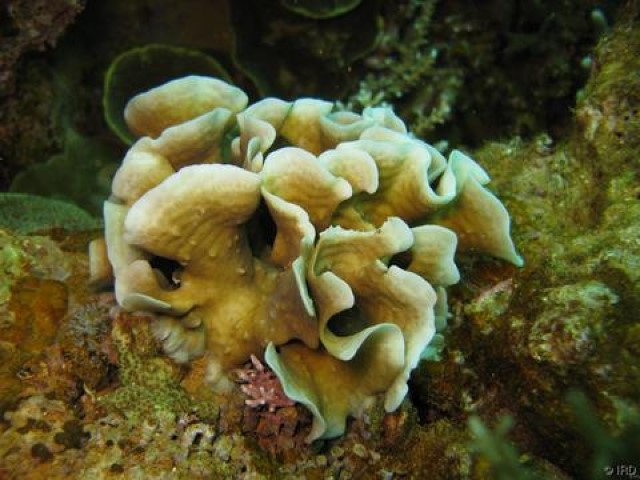
The encrusting growth pattern of Pavona corals adds texture and depth to any reef tank. These corals are easy to care for, hardy, and tolerant of various lighting conditions, making them among the best SPS corals for beginners.
Pavona corals come in shades such as green, brown, and purple.
Pavona Recommendations
Water Parameters
- Phosphate: 0.03 – 0.07 ppm
- Calcium: 380 – 450 ppm
- Magnesium: 1250 – 1350 ppm
- Alkalinity: 8 – 11 dKH
Water Flow: Moderate
Tank Placement: Middle to the lower of the tank
Feeding: Not required, but will benefit from supplemental feeding
Pavona Pros and Cons
- Attractive, encrusting growth pattern
- Tolerant of various lighting conditions
- Relatively hardy and easy to care for
- It can be prone to tissue necrosis if water parameters are unstable.
- It may not be as vibrant in color as other SPS corals.
Psammocora (Psammocora spp.)
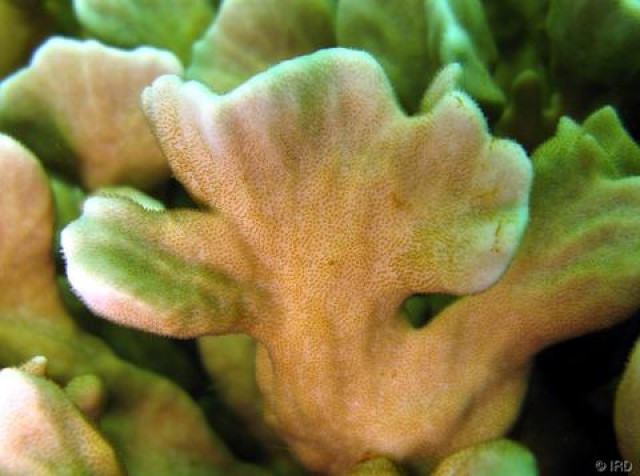
Psammocora corals are among the best SPS corals for beginners due to their hardy nature, adaptability, and tolerance for lower lighting conditions. Their encrusting growth pattern adds variety to your reef tank.
Psammocora corals can be found in green, yellow, and brown colors.
Psammocora Recommendations
Water Parameters
- Phosphate: 0.03 – 0.07 ppm
- Calcium: 380 – 450 ppm
- Magnesium: 1250 – 1350 ppm
- Alkalinity: 8 – 11 dKH
Water Flow: Low to Moderate
Tank Placement: Middle to the lower part of the tank
Feeding: Not required, but will benefit from supplemental feeding
Psammocora Pros and Cons
- Attractive, encrusting growth pattern
- Tolerant of lower lighting conditions
- Relatively hardy and adaptable
- It can be slow-growing.
- It may not be as eye-catching as other SPS corals.
Montipora Digitata (Montipora digitata)
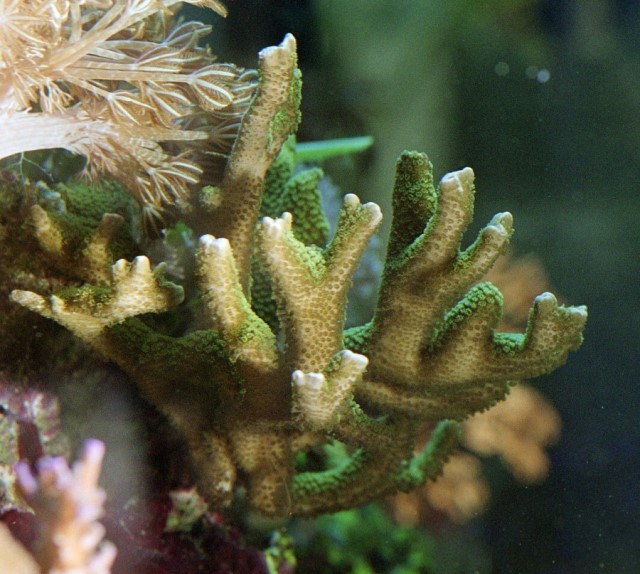
With its captivating branching growth pattern, Montipora digitata gives a dynamic look to your tank. This coral is fast-growing and robust, making it suitable for those new to reef-keeping.
Montipora digitata comes in various colors, including green, purple, red, and blue.
Montipora Digitata Recommendations
Water Parameters
- Phosphate: 0.03 – 0.07 ppm
- Calcium: 380 – 450 ppm
- Magnesium: 1250 – 1350 ppm
- Alkalinity: 8 – 11 dKH
Water Flow: Moderate to high
Tank Placement: Middle to the upper part of the tank
Feeding: Not required, but will benefit from supplemental feeding
Montipora Digitata Pros and Cons
- Unique, branching growth pattern
- Relatively hardy and fast-growing
- Available in a variety of colors
- It can be prone to tissue necrosis if water parameters are unstable.
- It may dominate other corals if not given enough space.
Porites (Porites spp.)
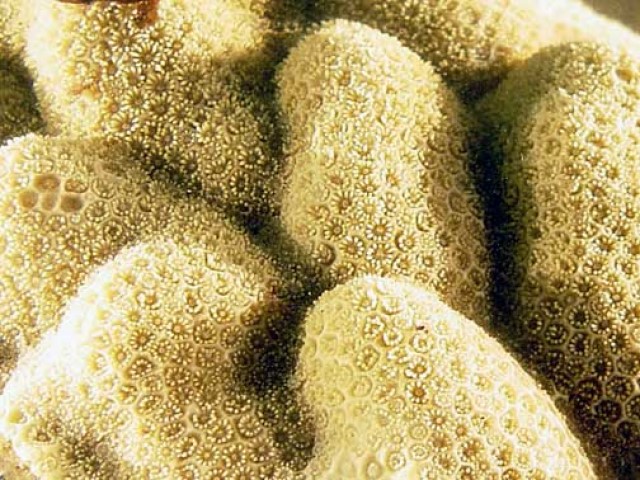
Porite corals feature encrusting or mounding growth patterns that add dimension to any reef tank. They are relatively slow-growing and hardy, making them an excellent choice for beginners.
Porite corals tolerate various lighting conditions and come in green, yellow, and brown colors.
Porites Recommendations
Water Parameters
- Phosphate: 0.03 – 0.07 ppm
- Calcium: 380 – 450 ppm
- Magnesium: 1250 – 1350 ppm
- Alkalinity: 8 – 11 dKH
Water Flow: Moderate
Tank Placement: Middle to the lower part of the tank
Feeding: Not required, but will benefit from supplemental feeding
Porites Pros and Cons
- Attractive, encrusting, or mounding growth patterns
- Tolerant of various lighting conditions
- Relatively hardy and slow-growing
- It may not be as vibrant in color as other SPS corals.
- They can be susceptible to pests and diseases.
Leptoseris (Leptoseris spp.)
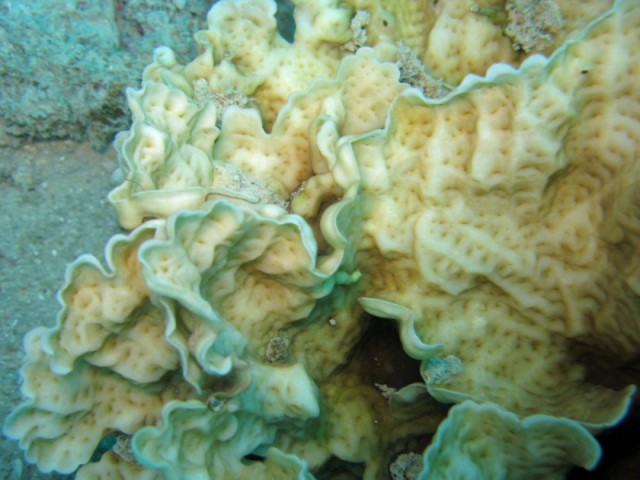
Leptoseris corals, characterized by their encrusting or plating growth patterns, add visual interest to your tank. These corals tolerate lower lighting conditions and come in orange, yellow, green, and brown colors.
Their hardy nature and easy-care requirements make them an excellent choice for beginners.
Leptoseris Recommendations
Water Parameters
- Phosphate: 0.03 – 0.07 ppm
- Calcium: 380 – 450 ppm
- Magnesium: 1250 – 1350 ppm
- Alkalinity: 8 – 11 dKH
Water Flow: Low to Moderate
Tank Placement: Middle to the lower part of the tank
Feeding: Not required, but will benefit from supplemental feeding
Leptoseris Pros and Cons
- Attractive, encrusting, or plating growth pattern
- Tolerant of lower lighting conditions
- Relatively hardy and easy to care for
- It can be slow-growing.
- It may not be as vibrant in color as other SPS corals.
Best SPS Corals for Beginners: Care for Small Polyp Stony Coral
SPS Coral Lighting
Aquarium lighting plays a crucial role in the health and growth of SPS corals. These corals rely on photosynthetic algae, called zooxanthellae, for their energy and nutrients. It is essential to understand the factors that influence the effectiveness of your lighting system.
The bare minimum requirements are the PAR, spectrum, and distribution necessary to support your corals’ metabolic functions. Most aquarists don’t just want their corals to survive but thrive with explosive growth and beautiful coloration.
Related Article: The Science of Reef Tank Lighting
SPS Water Flow
Water flow is essential in maintaining a healthy environment for SPS corals, as it helps deliver nutrients, remove waste, and facilitate gas exchange. Adequate water flow promotes coral growth and prevents the buildup of harmful algae and detritus.
A moderate to high flow rate is recommended for SPS corals to mimic their natural habitat. For example, in a 100-gallon tank, the recommended flow would be between 2,000 and 4,000 gallons per hour (GPH). This typically translates to a flow rate of 20-40 times the tank volume per hour.
To achieve this flow rate, you can utilize a combination of return pumps and powerheads strategically placed around the tank to create random, turbulent flow patterns. This will ensure the corals receive the necessary water movement while preventing dead spots within the tank.
Be cautious not to create an excessive flow that could damage the corals or impede their growth.
SPS Coral Feeding
SPS corals predominantly rely on photosynthesis for nourishment but can also benefit from heterotrophic feeding. Many hobbyists focus solely on providing sufficient light for coral growth. Still, studies have shown that incorporating direct feeding can improve growth rates.
Polyp size is an excellent indicator of the appropriate food size for your SPS corals. Smaller polyps require finer food particles, while larger polyps can handle larger particles.
SPS corals thrive on powdered food containing zooplankton and easy-to-use liquid food such as Red Sea’s Reef Energy Plus. Feeding SPS corals every 2-3 days is ideal.
Reef Energy Plus was designed to provide a perfectly balanced source of amino acids, fatty acids, vitamins, and carbohydrates in an easy-to-dose form that can be directly absorbed and consumed by your corals. Red Sea’s Reef Energy Plus was also designed to be easy to use with automatic dosers, and thanks to its ideal nutritional makeup, it contributes to minimal over skimming.
Red Sea Reef Energy Plus AB+ 500ml Aquatics – Great liquid food for your corals!
The optimal feeding time is about an hour after the lights go out when the corals extend their tentacles. Turning off the water flow will allow the corals to catch food more easily, if possible.
Get Help from Tankmates!
Select saltwater fish that will eat pests that can aggravate or damage your corals. Read the article: Best Saltwater Fish for Beginners.
Stock your tank with Invertebrates that can help keep your tank free of pests that can aggravate or damage your corals. Read the article: Best Clean-up Crew for a Reef Tank.
Summary: Best SPS Corals for Beginners
These 9 SPS corals are an excellent choice for beginners looking to start their reef aquarium. Each coral has unique growth patterns, colors, and care requirements, making them suitable for various tank setups.
You can create a thriving and visually stunning reef tank by following the recommended parameters, water flow, tank placement, and feeding guidelines. As with any coral, monitor your tank’s water quality and adjust your care accordingly to ensure the health and well-being of your SPS corals.
A beginner can have a successful and beautiful SPS coral tank with proper care and attention.